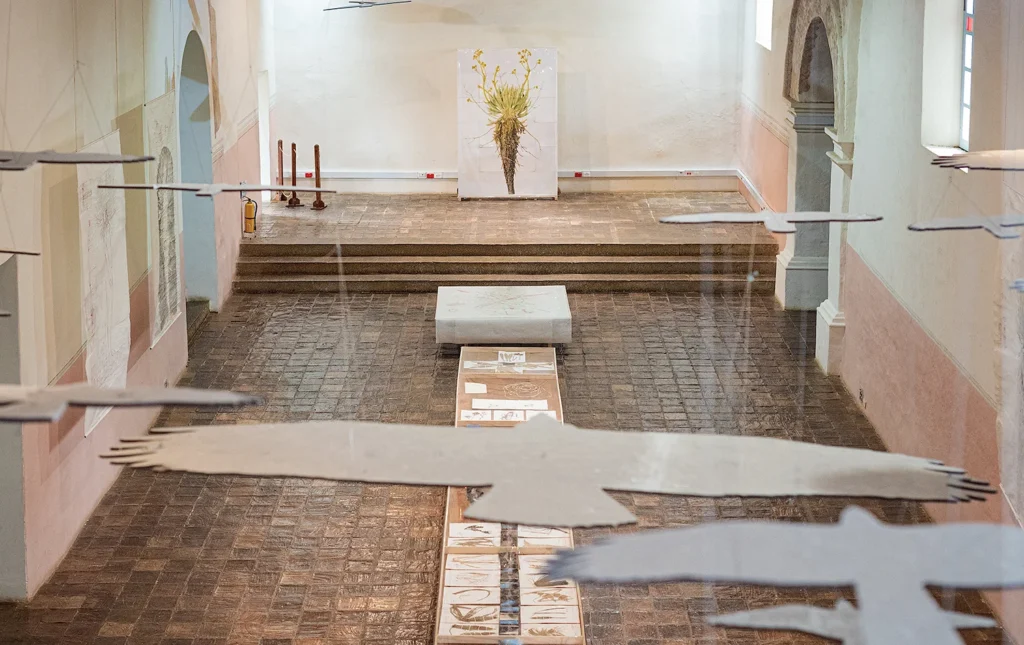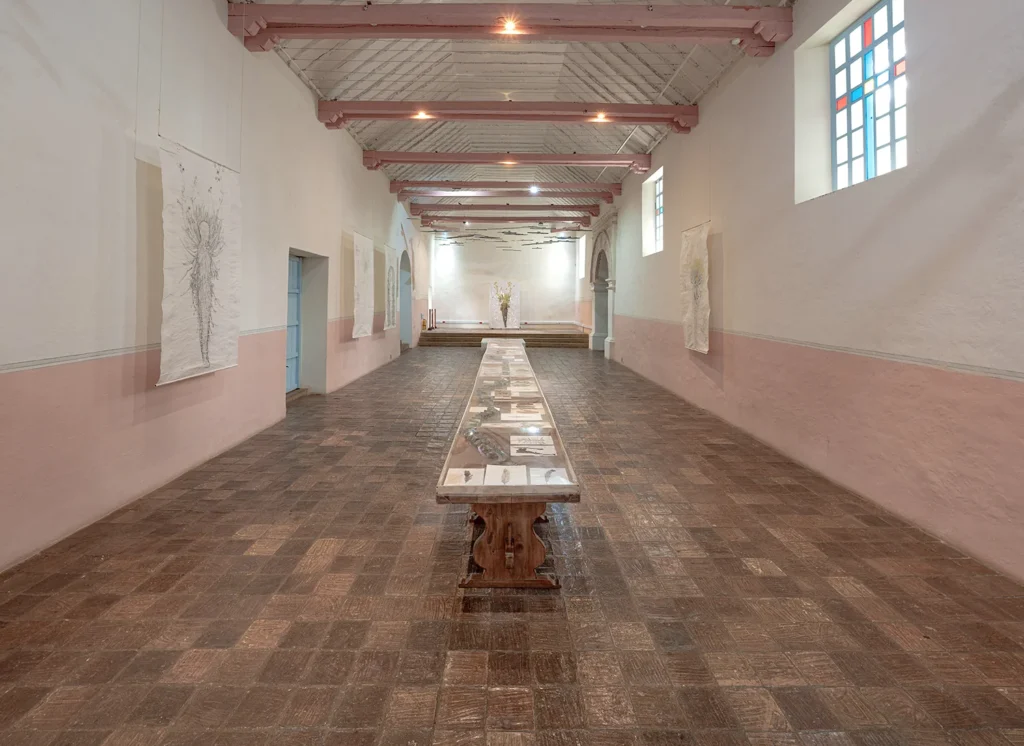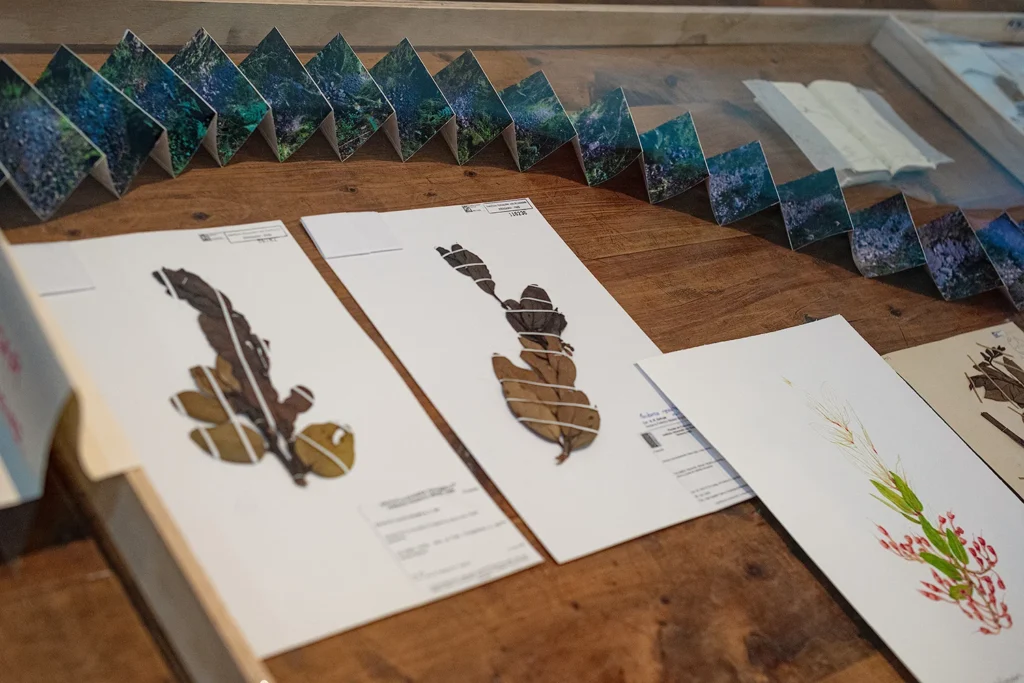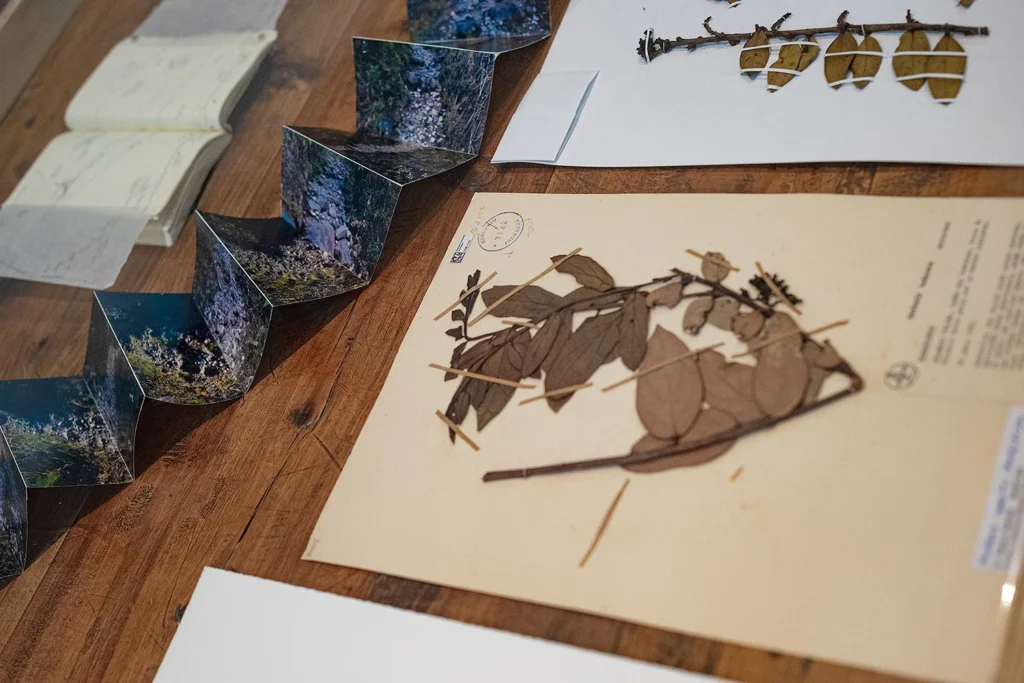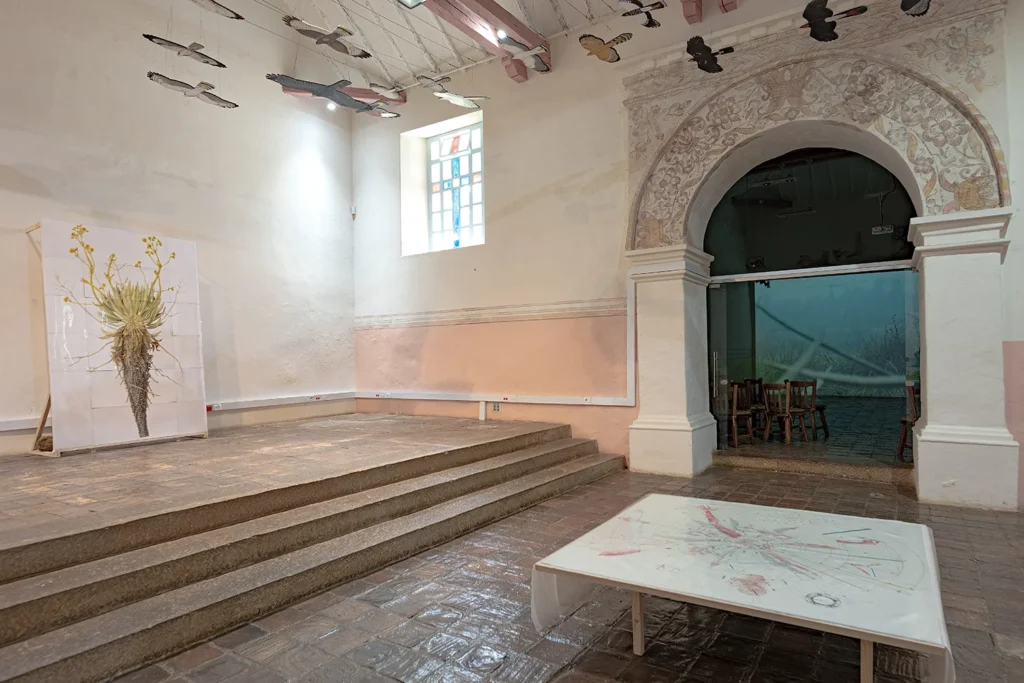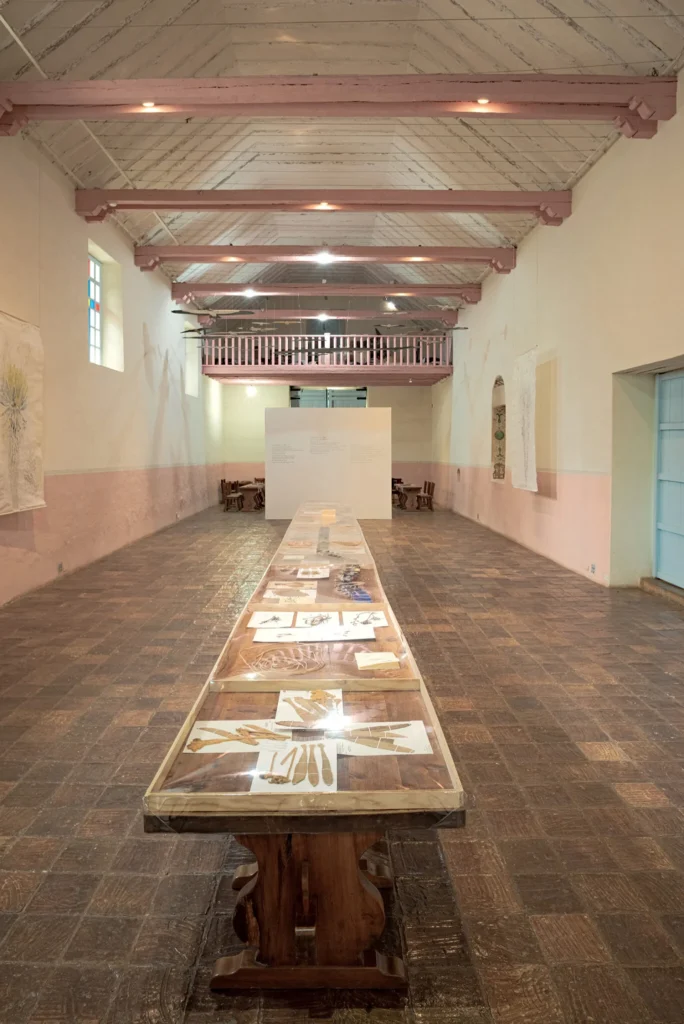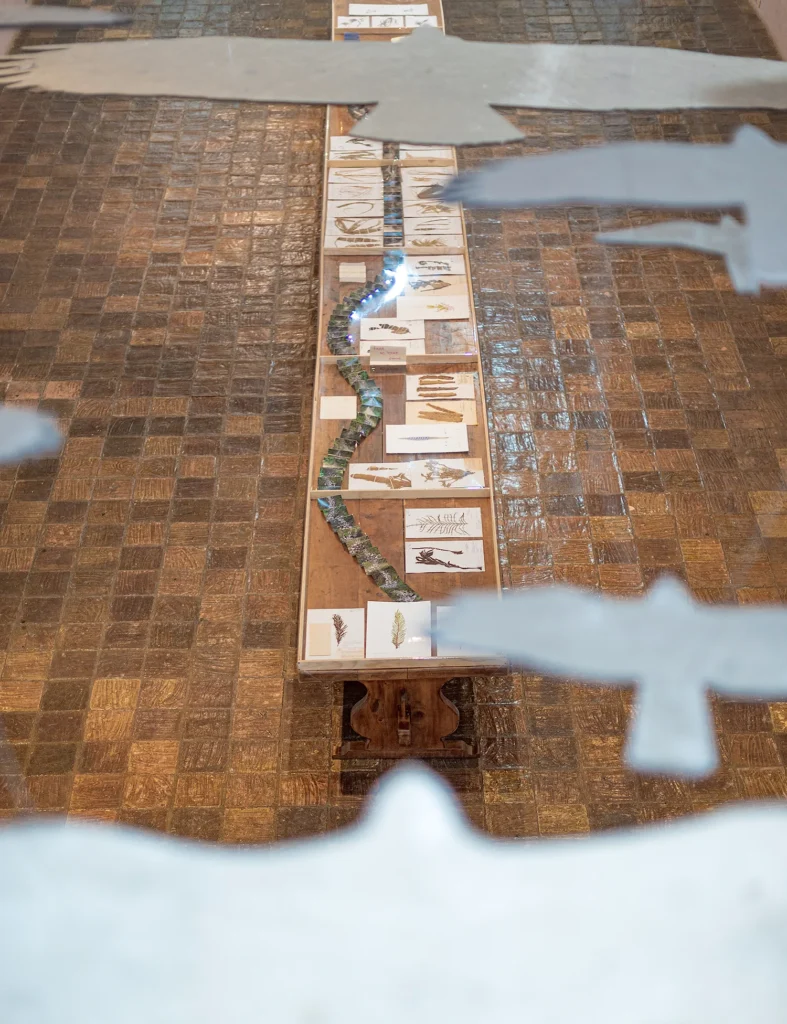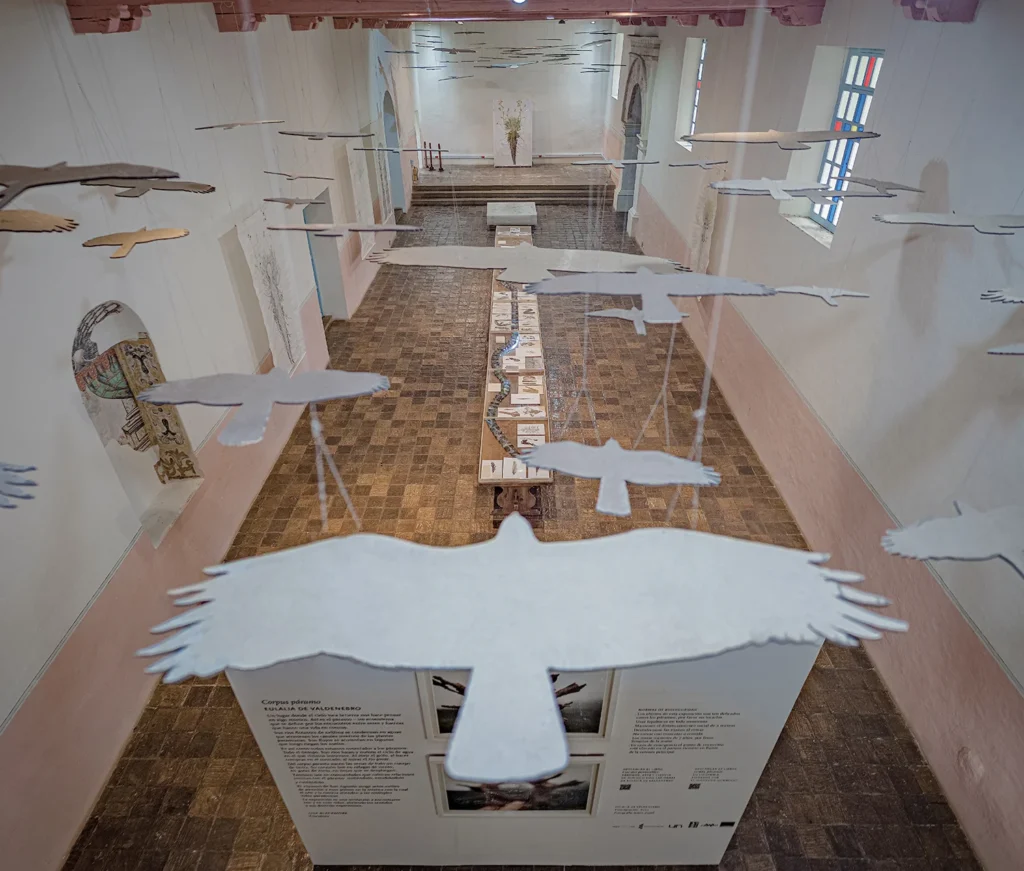Eulalia and I met in 2019 in Bogotá, Colombia. Eulalia was one of the collective of artists, activists and scientists we gathered online during the Covid-19 pandemic in 2020. We then collaborated on this exhibition at Colombia’s leading biological sciences institution, the Alexander von Humboldt Instituto de Recursos Biológicos, placing Eulalia’s work in dialogue with plant archives in the Herbarium and co-editing the open access book, Cuerpos permeables that brought together social and natural sciences researchers from the Instituto with curators and educators.
VISIT EXHIBITION WEBSITE ON ENTRE-RIOS.NET
Eulalia de Valdenebro, Corpus páramo, Claustro San Agustín, Villa de Leyva
October 16 – November 13, 2021
A place where the sky touches the earth makes us think of something mystical. This is the páramo – an ecosystem defined by encounters between beings and forces that create a common life. Its floating rivers of mist condense into waters that flow through the internal channels of páramo plants. Their flows accumulate in lagoons that then irrigate the soils.
We are all connected to the páramos. All the time. Their rivers flow down and nourish the water cycle we are immersed in. When we turn on the tap, when we shop at the market, when we watch the river flow by. From the páramo’s body, the veins of an entire earth-being are born. Its heart beats in gusts of wind, in dewdrops, in unfurling leaves. It also beats in communities that cultivate intimate relationships with the páramo, sensing it, studying it, and caring for it.
The Claustro San Agustín welcomes subtle acts of attention to these pulses, as art and science combine to attend to the multiple lives of the páramo. The exhibition is an invitation to encounter these lives, opening the senses to their diverse expressions.
Corpus páramo is an encounter between art and science that seeks to stimulate dialogues of knowledges around the páramos. It invites us to feel the páramo ecosystem as a network of living forces, a place of deep permeability between human bodies, water bodies, and earth bodies. The exhibition comprises works that attend to plants and stones, wind, lakes, and mist, moving between botanical illustration and philosophy, biology and fieldwork. The drawings, installations, and videos reflect Eulalia’s practice “observing plants, drawing them, studying them, and understanding them by living with them…. because they make possible the life of all other earthlings and for that reason alone, it is worth paying them a lot of attention.”
Lisa Blackmore

Eulalia de Valdenebro (Colombia)
Artist, botanist, and Lecturer in Fine Art at the Universidad Nacional de Colombia. She holds a PhD in Aesthetics and Technoology from Universidad Paris 8. Her practice spans diverse media, with a strong focus on ecosophy and fieldwork.
Her work situates the human in a relational and symbiotic place with respect to nature, via a decolonial posthumanism framing. She works performatically with her body in her works, incorporating it as a method of dialogue with plants and ecosystems, as well as a instrument for measurements.
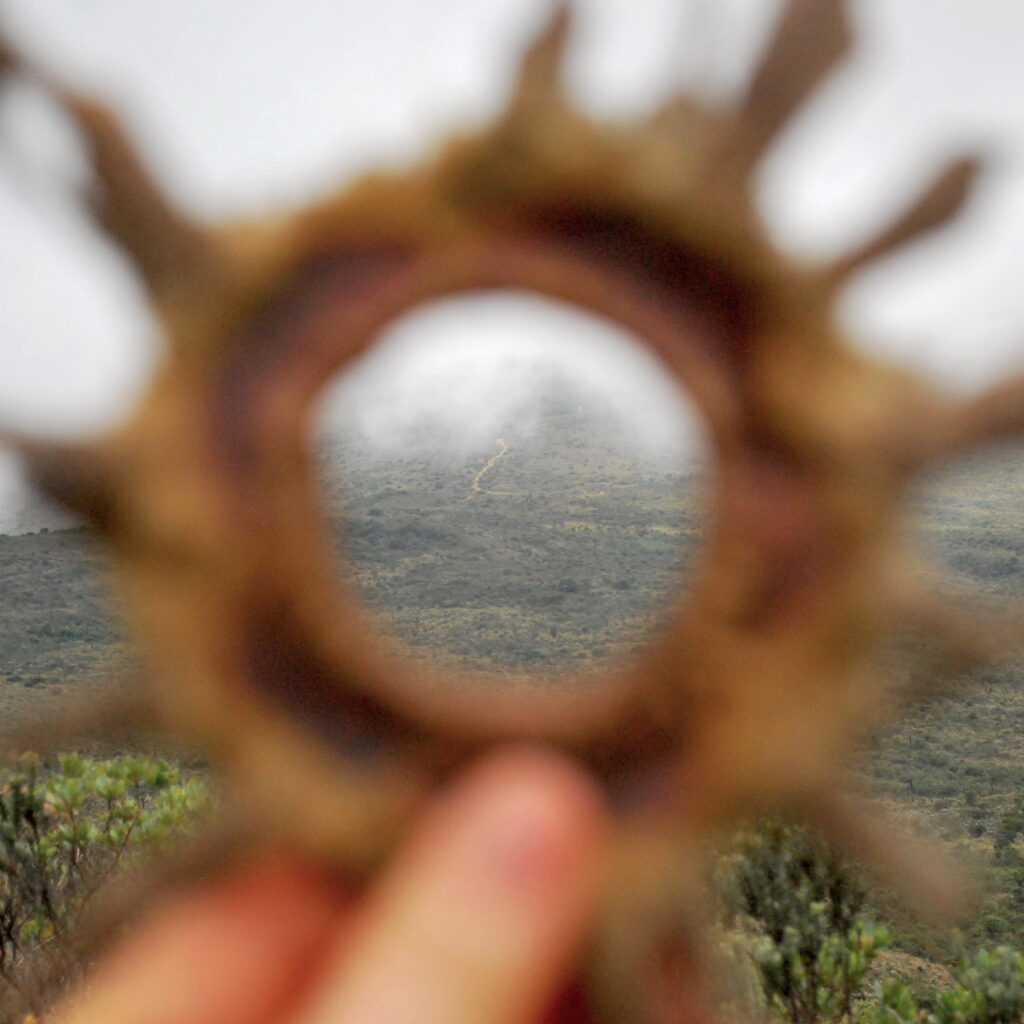







Installation Views
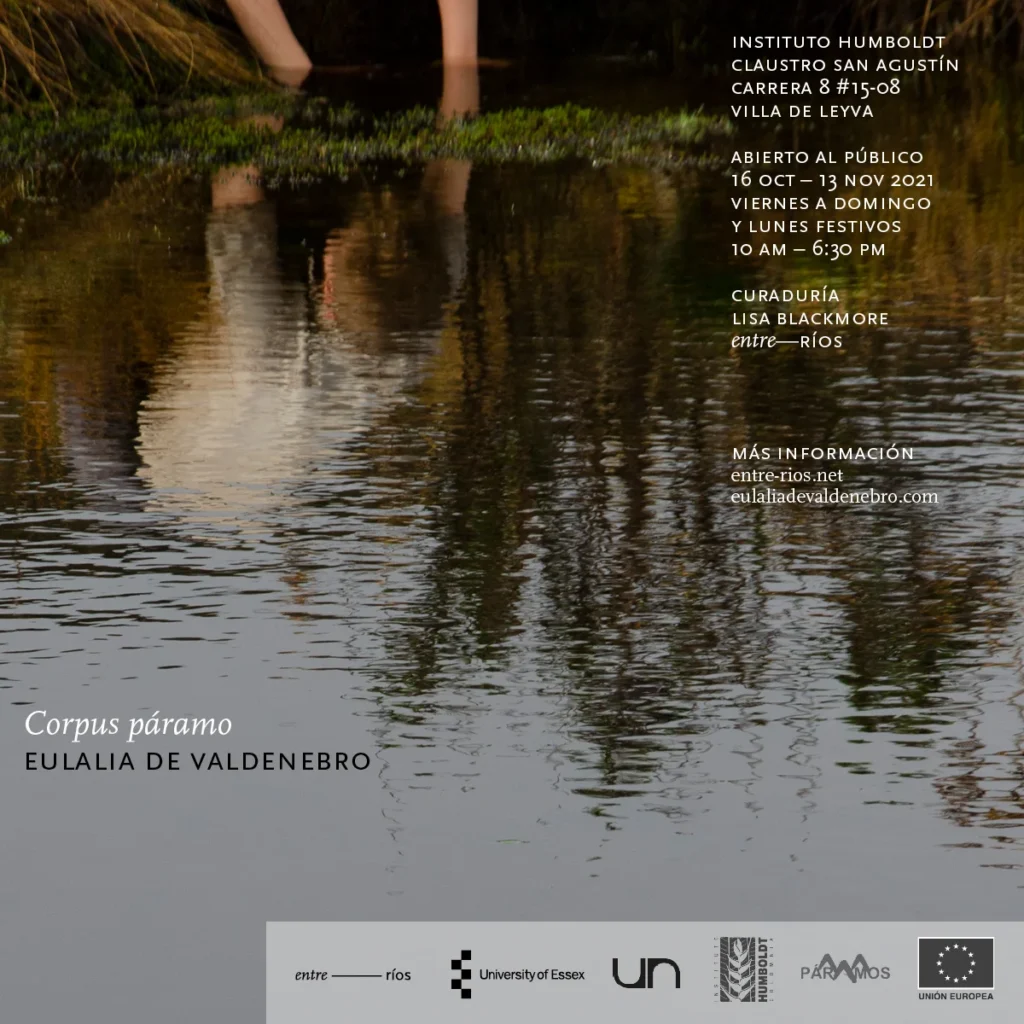
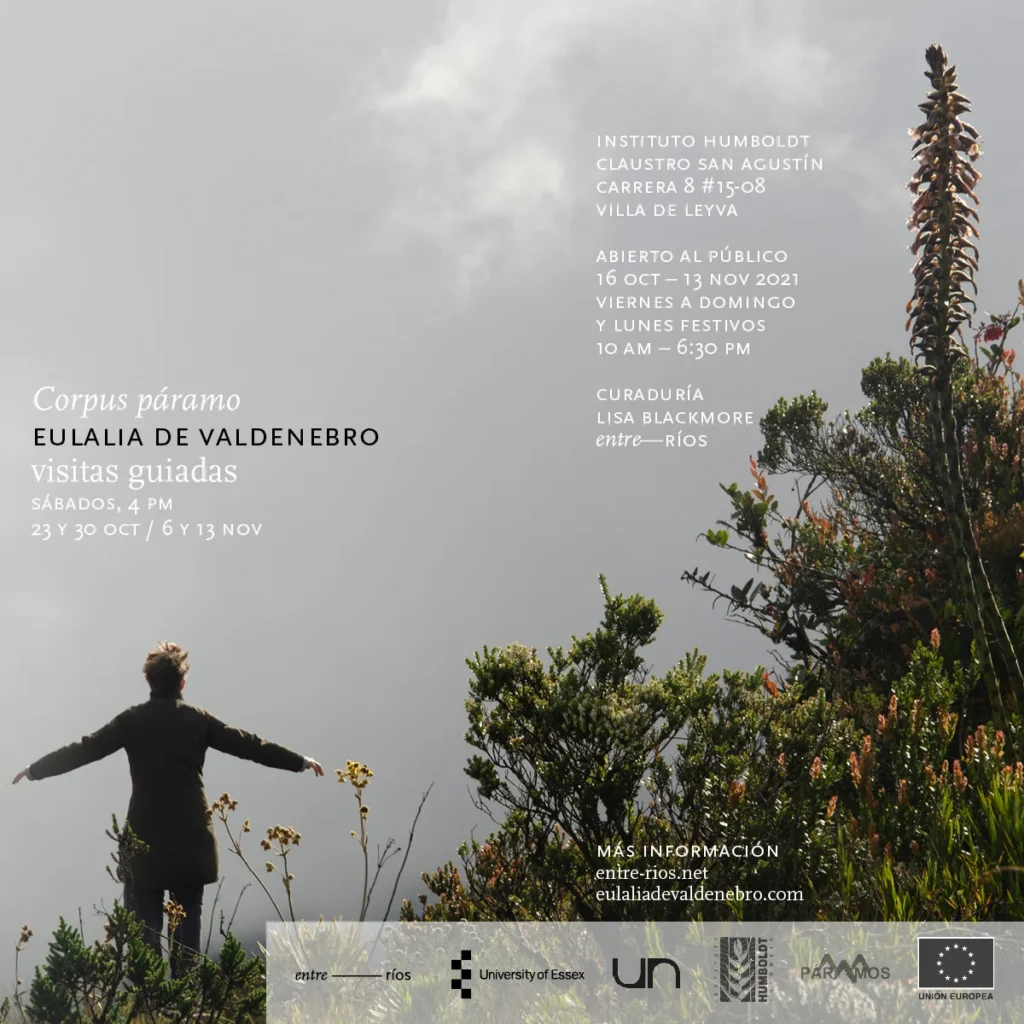

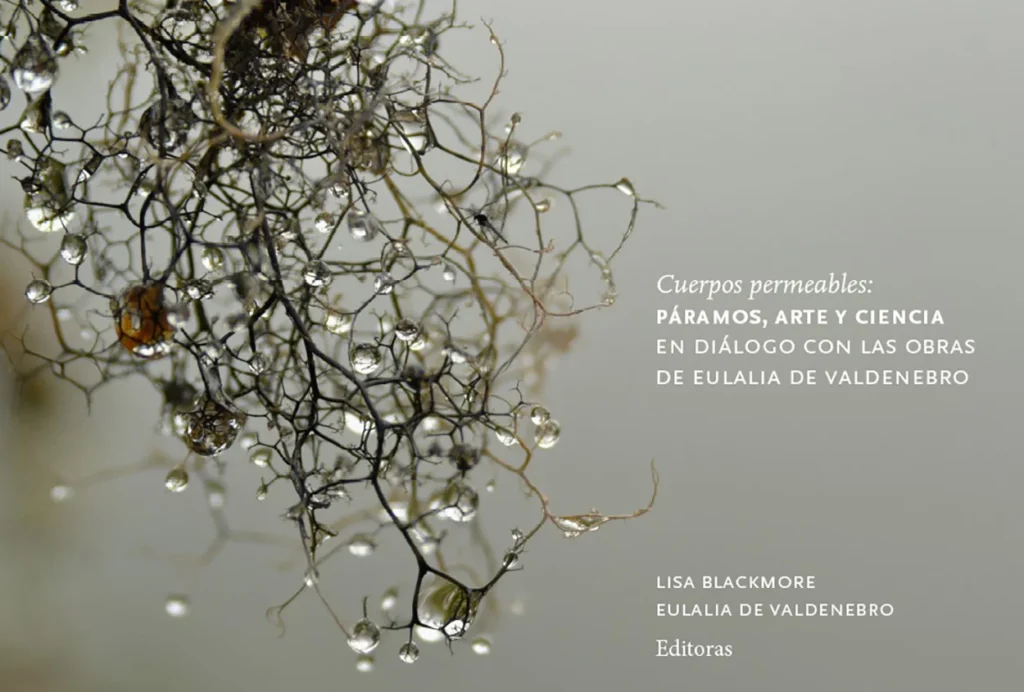
Public Program
Botanical Drawing Workshop
Eulalia delivered a botanical workshop on November 13, 2021, in which participants drew plants from the river banks of the stream bordering the exhibition space, guided by the artist to explore botanical knowledge through the senses, opening conversations about sustainable relations to fragile ecosystems. Participants gained knowledge on how to identify and draw highland plants such as Bromeliaceae, Asteraceae y Rosaseae.





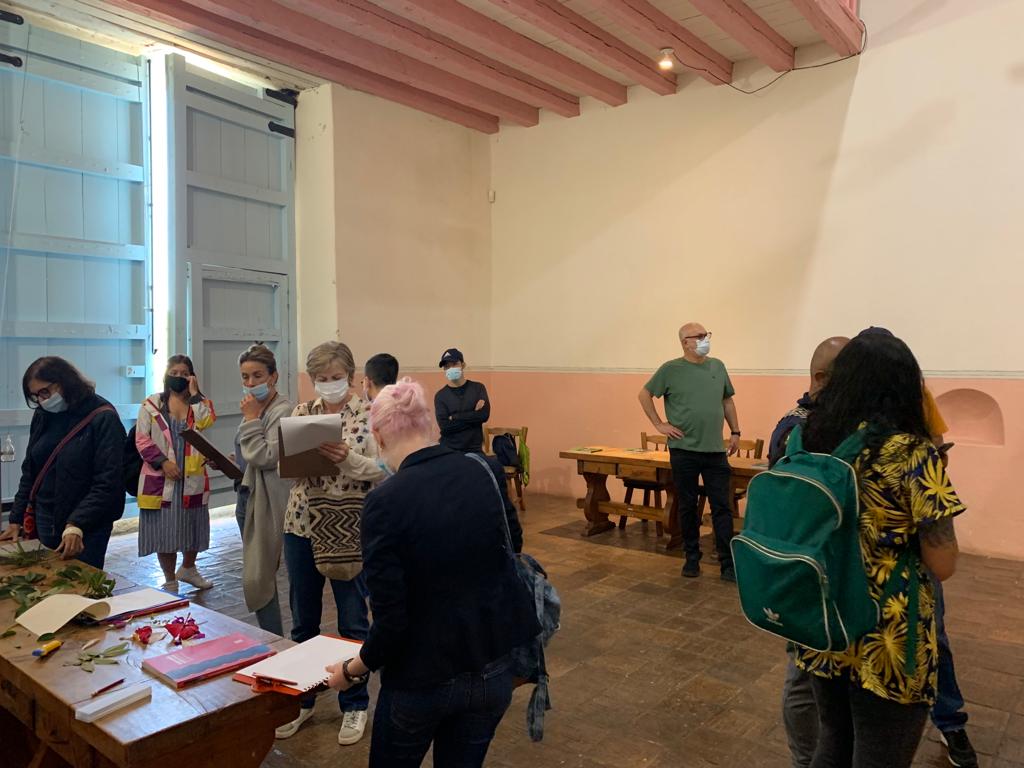
“Building Capacity in Highlands Communities”, Taller de Fortalecimiento de capacidades a comunidades de páramo, 26-28 November 2021
The Instituto led a workshop building capacity among local communities in relation to holistic management of highlands; participation and governance; possible routes for holistic management of highland areas. The workshop was designed by social scientists at the IH in accordance with the Plan PICA 2019-22, which aims to democratise scientific knowledge and knowledge exchange within the Proyecto Páramos, Biodiversidad y Recursos Hídricos en los Andes del Norte, using research materials produced by IH scientists and researchers, as well as the exhibition Corpus Páramo.

